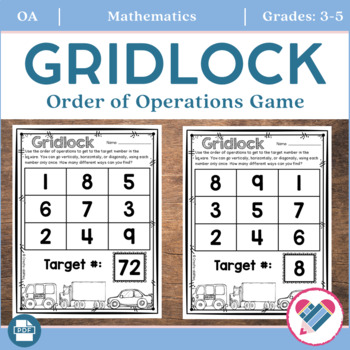Order of Operations Math Game
- PDF
Description
Gridlock is a fun and exciting way to help your students review the order of operations or PEMDAS. Included in this download are 25 board games, a blank template, and 4 different recording sheets.
How to Play
● Students look at the target number in the box.
● They then choose 3 number combinations from any line- vertical, horizontal, or diagonal.
● Students use the order of operations or PEMDAS in any combination. (parentheses, exponents, multiplication, division, addition or subtraction.)
● They record their correct answers on the answer sheet.
** This game can be played alone, in pairs, or small group. If there is more than one player, the students can get a point for each correct equation. The person with the most points wins.**
Check out my preview for a closer look at this product!
Feedback is greatly appreciated!!
★★★★You Might Also Like★★★★
●Order of Operations Exit Tickets
Enjoy!





